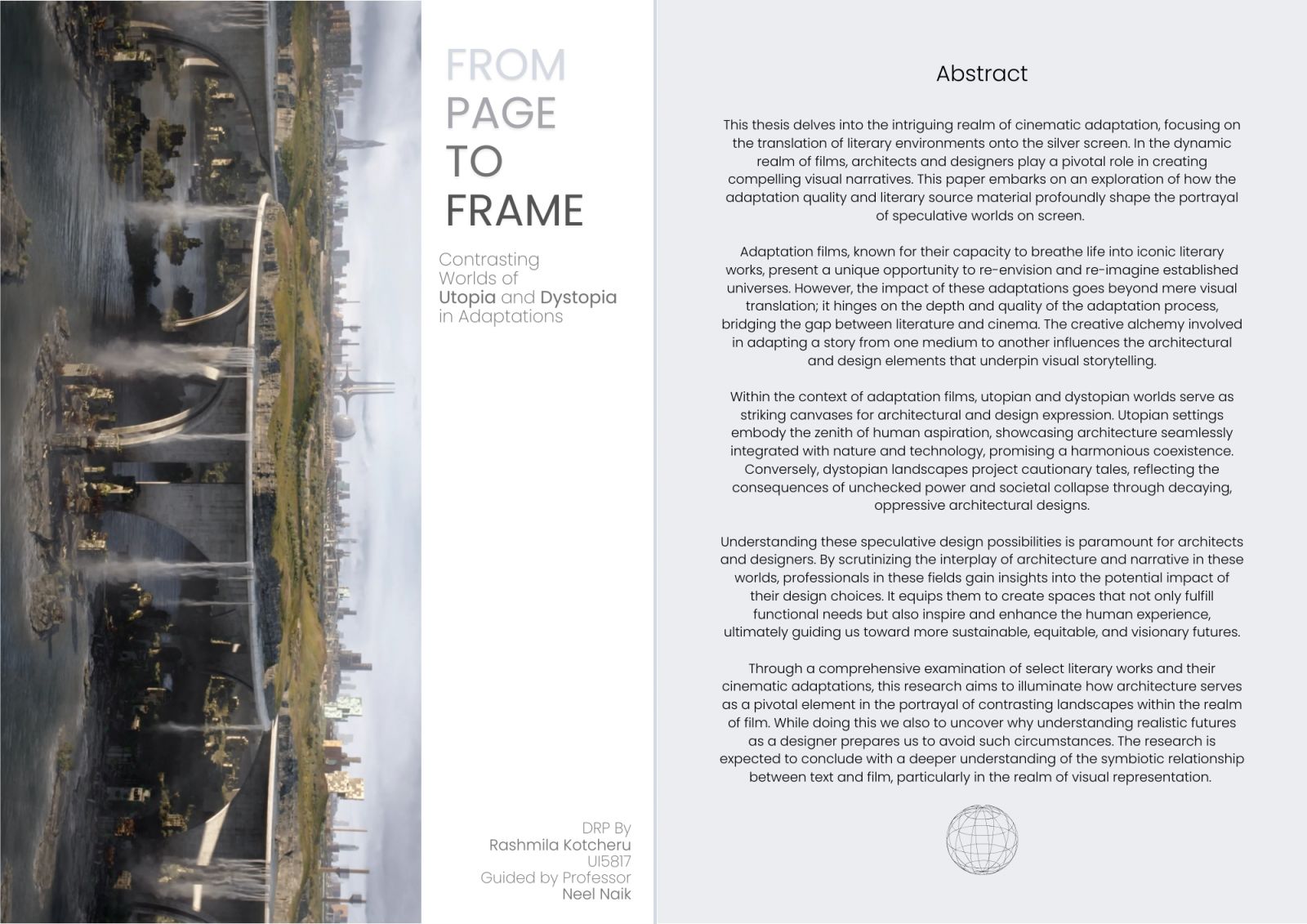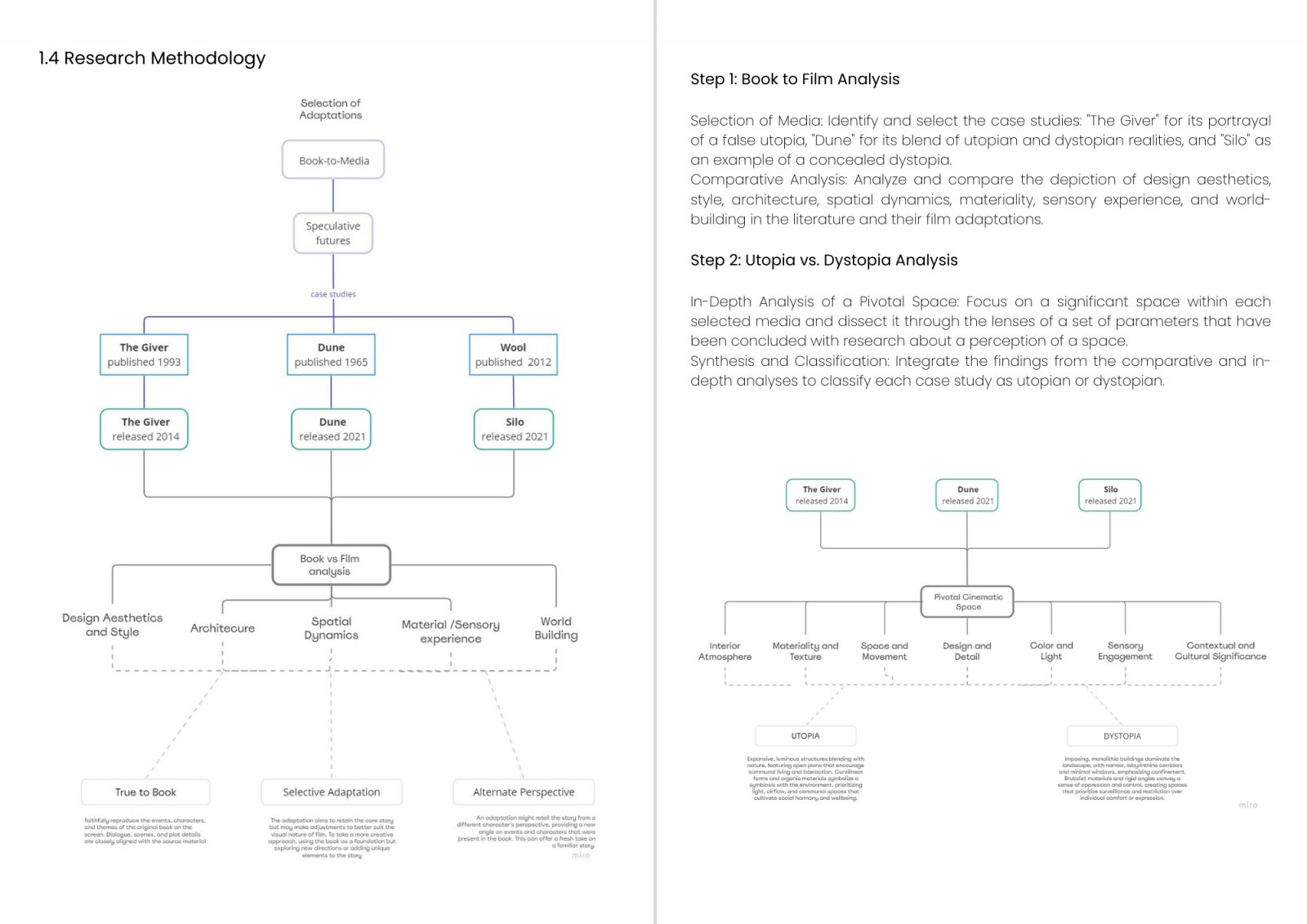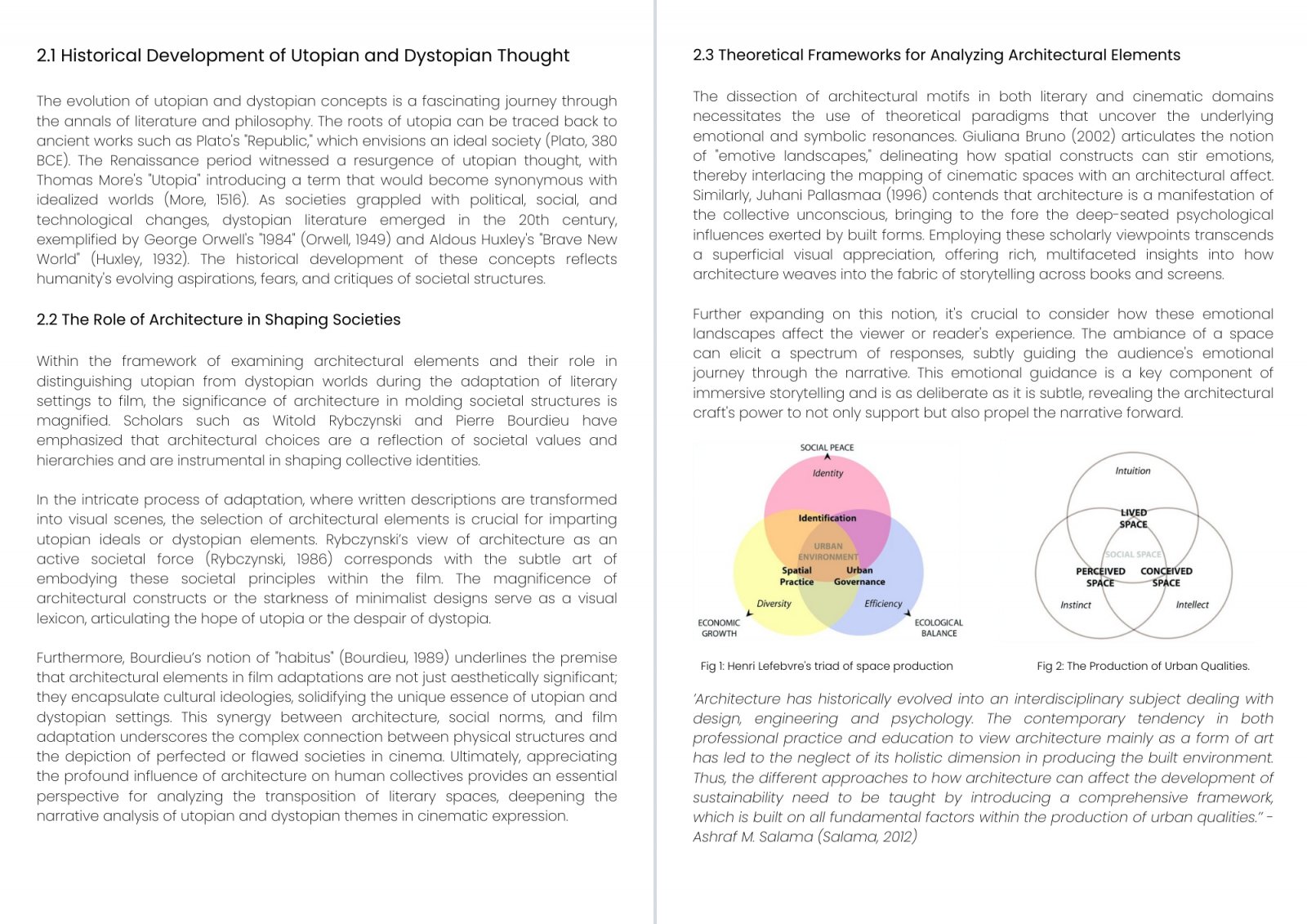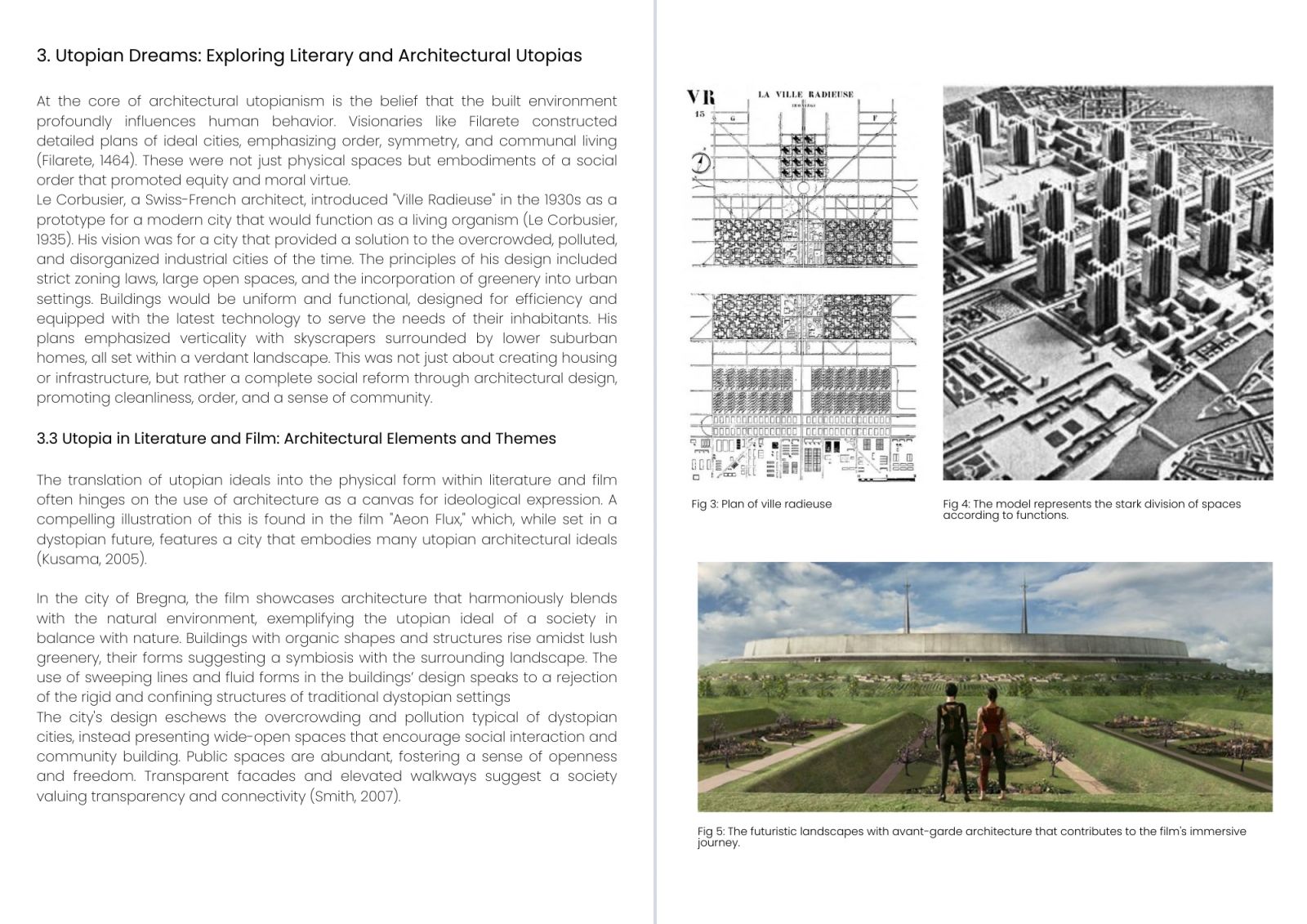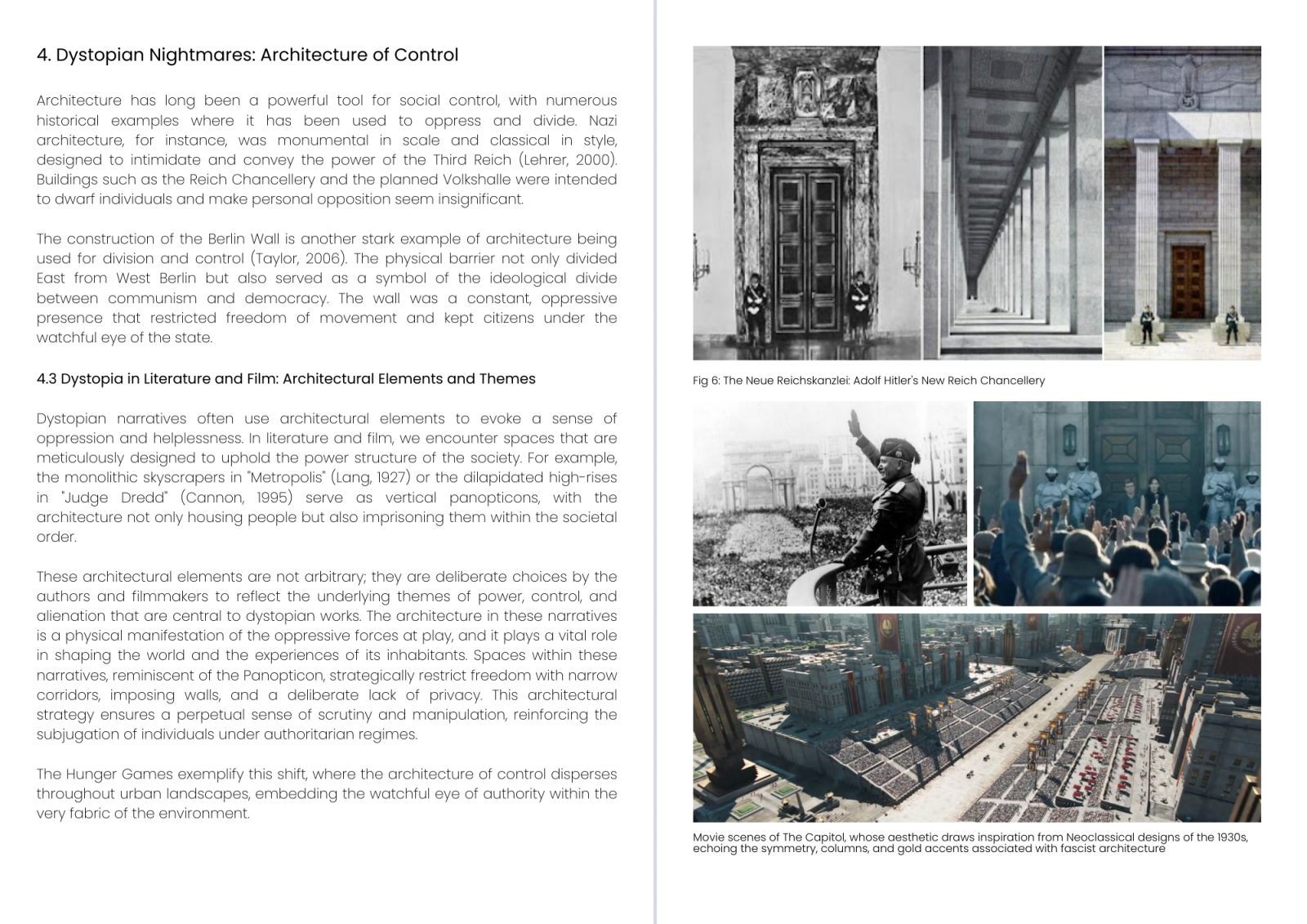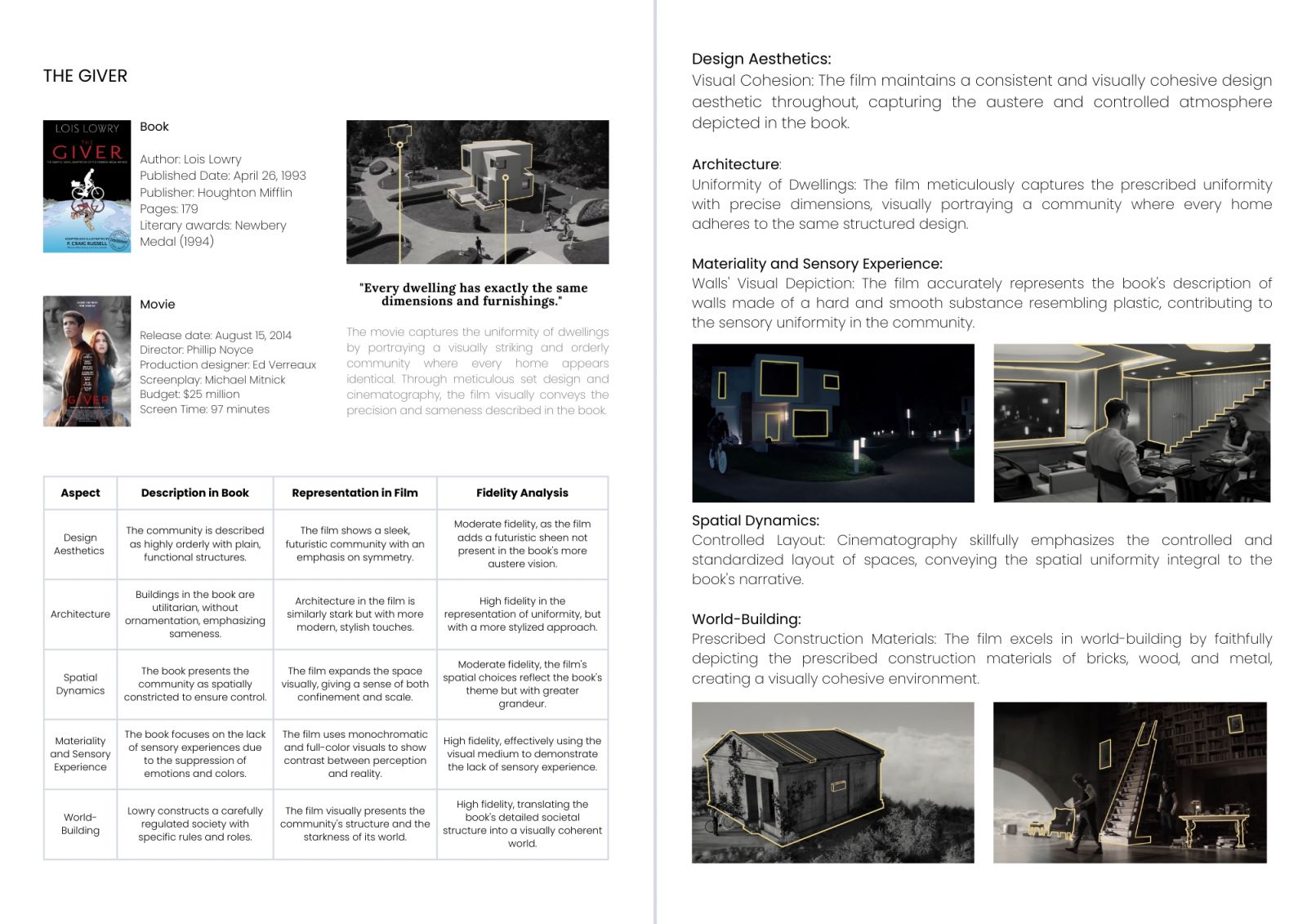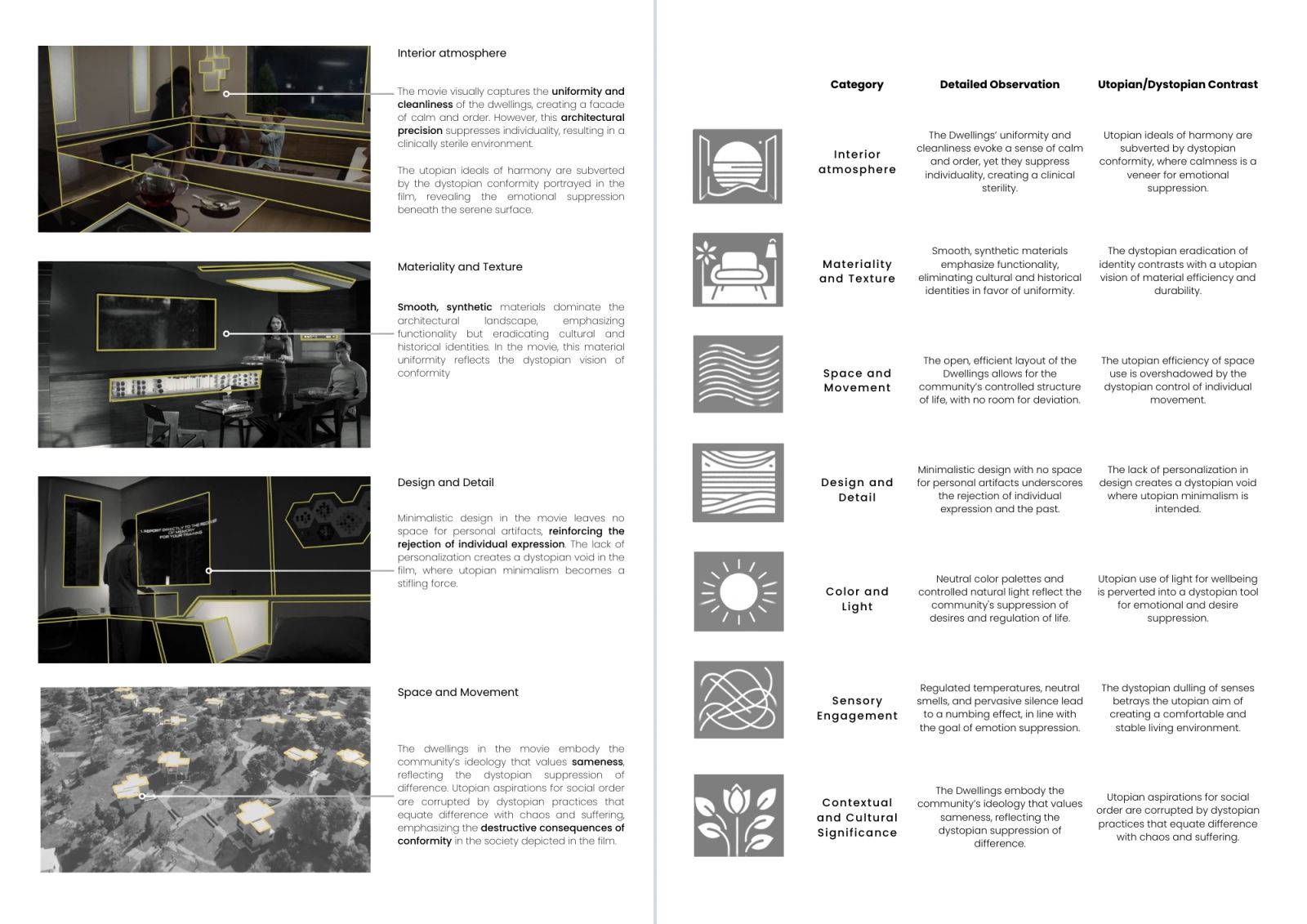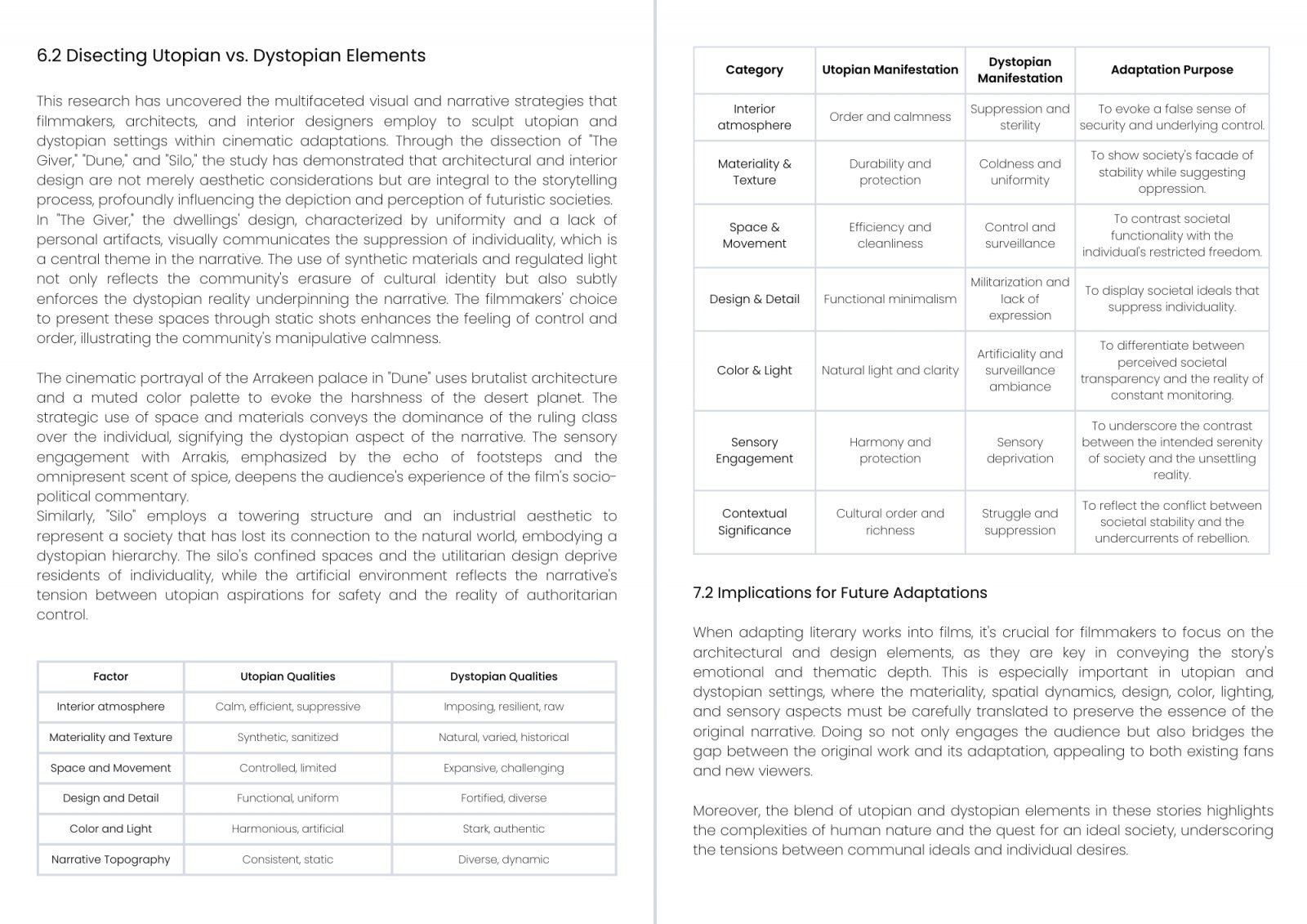Your browser is out-of-date!
For a richer surfing experience on our website, please update your browser. Update my browser now!
For a richer surfing experience on our website, please update your browser. Update my browser now!
This thesis explores cinematic adaptations, emphasizing the transformation of literary settings into visual narratives. Architects and designers wield influence in crafting compelling cinematic worlds. The study investigates how adaptation quality and source material impact on-screen speculative environments. The creative process of adapting influences architectural elements, especially in utopian and dystopian settings that serve as expressive canvases. Utopian settings showcase the harmonious integration of architecture, nature, and technology, embodying human aspiration. Dystopian landscapes caution against unchecked power, depicting societal collapse through oppressive architectural designs. Architects and designers benefit from studying these speculative possibilities, gaining insights to guide their choices toward creating inspiring and functional spaces. Examining literary works and their film adaptations reveals architecture's pivotal role in portraying contrasting landscapes. The research aims to deepen our understanding of the symbiotic relationship between text and film, emphasizing the importance of realistic design to avoid undesirable futures.
